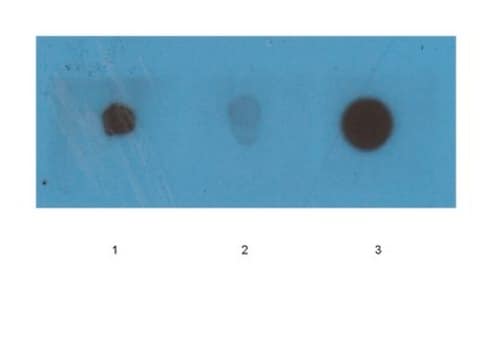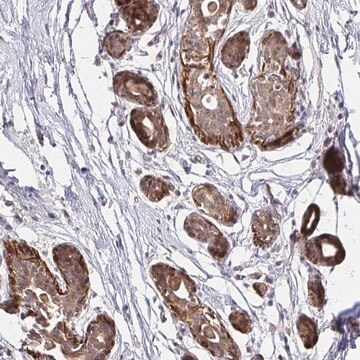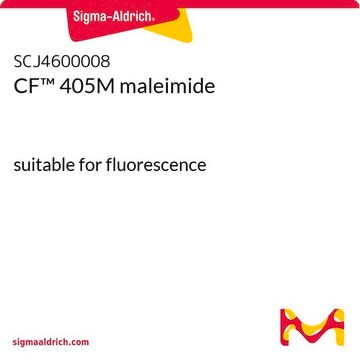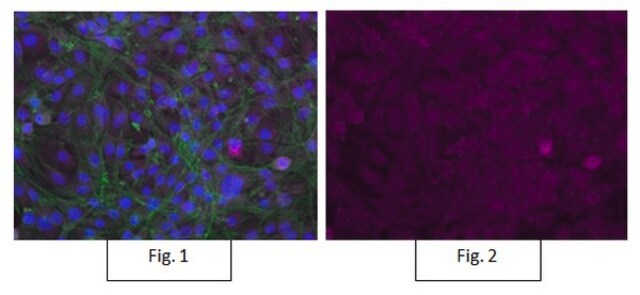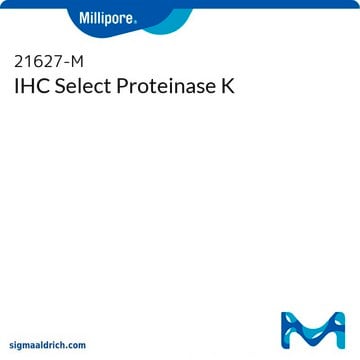S7115
ApopTag Positive Control Slides, rat mammary gland 4d post weaning
This product is intended as a positive control for use with all ApopTag In Situ Apoptosis Detection Kits.
Seleccione un Tamaño
Seleccione un Tamaño
About This Item
Productos recomendados
Quality Level
manufacturer/tradename
ApopTag
Chemicon®
technique(s)
activity assay: suitable (apoptosis)
shipped in
ambient
General description
Application
These positive control slides of female rat mammary tissue 4-days post weaning show only 1-2% of the cells being apoptotic. Microscopic inspection is usually required to confirm proper kit activity.
Stain is generally localized to chromatin, and is intensely colored. The localization and sensitivity to be expected with the ApopTag Peroxidase (S7100, S7101) or ApopTag Fluorescein (S7110, S7111, S7160, S7165) Kits are similar. Positive objects vary in size, from intact nuclei to much smaller apoptotic bodies, and in shape, from round to irregular. Such objects may be either isolated, clustered, or engulfed in the cytoplasm of a phagocytic cell. Some unstained apoptotic nuclei or bodies may also be expected. Light cytoplasmic staining might co-localize with intense chromatin staining (this might be due to fragmented DNA leaching from the nucleus, or that in phagocytic organelles). If staining of non-apoptotic cell nuclei is observed with the ApopTag Peroxidase kits (S7100, S7101), the user can attempt to decrease the substrate development time or temperature, or to further dilute the anti-digoxigenin antibody reagent in 0.5% (w:v) BSA. Counterstaining is recommended (see The Complete ApopTag Manual).
Limitations
This control tissue has been selected for positive staining with all ApopTag Kits. Results with control tissue may vary from results with other tissues because of both sample preparation differences and intrinsic tissue differences.
Quality
Storage and Stability
Legal Information
Disclaimer
Certificados de análisis (COA)
Busque Certificados de análisis (COA) introduciendo el número de lote del producto. Los números de lote se encuentran en la etiqueta del producto después de las palabras «Lot» o «Batch»
¿Ya tiene este producto?
Encuentre la documentación para los productos que ha comprado recientemente en la Biblioteca de documentos.
Active Filters
Nuestro equipo de científicos tiene experiencia en todas las áreas de investigación: Ciencias de la vida, Ciencia de los materiales, Síntesis química, Cromatografía, Analítica y muchas otras.
Póngase en contacto con el Servicio técnico

